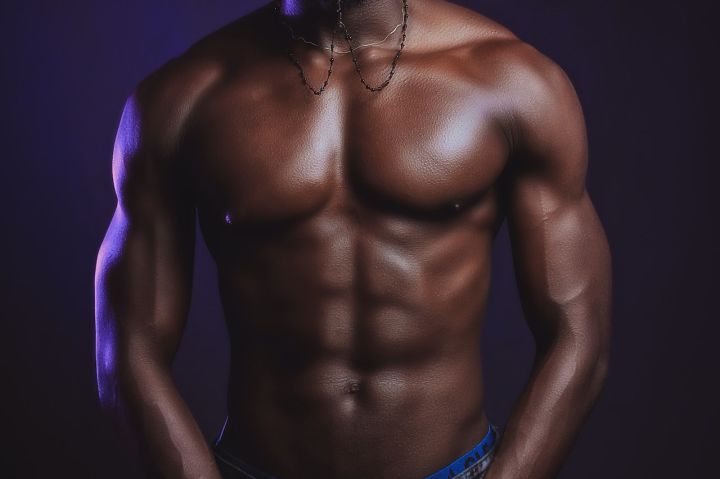newbies train their chests, masters train their backs! If you still want to get down to business, your chest and back must be coordinated. What's more, you don't want the "Little wings" That are both sexy and classy? Get your "Idle" Back in shape!
Here are 5 great back exercises for you.

back training tip 1 - start with old school training
start with the basics. This method is the opposite of the new school method, we're going to be doing movements going back to 1957, it's an old school classic and over the decades as more and more pull down and rowing machines have entered the gym, trainers have been doing less and less free weights.

back training doing 1 or 2 non-apparatus movements is also less likely to be done only with free weights. We can start with the old school classic training plan: Complete incremental sets of hard pulls and barbell rowing, then complete a total of 3 free weight movements and one self weight, which will extend from the glutes to the obliques and strengthen your posterior chain muscles.
Back training tip 2 - unilateral back movements
the main mistake most enthusiasts make in back training is to place too much emphasis on the weight being moved and not feeling the target muscles being trained. A good way to correct this is to have both sides of the back trained independently.

of the common daily unilateral back training movements, the one that is undoubtedly the most familiar is the single arm dumbbell row. A 2nd unilateral movement could be the one-arm high pull-down. The 3rd unilateral arm movement, the single arm low rope cable row is similar to the double arm, but allows for a longer range of motion when contracted. Finally, for the single arm rope high pull down, secure the rope at overhead height, stand on the side of the gantry and hold the handle with one hand. Start with your arms straight and your latissimus dorsi stretched, pulling your arms down from overhead to the same side in the direction of your thighs. This will focus the training on the outer edge of the latissimus dorsi and the serratus anterior.

back training tip 3 - pre-fatigue
hard pulls and barbell rows are usually the first movements performed in back training. If this is your training habit, you may be surprised to find that your back is better stimulated when you do these movements after using lighter, more muscle isolating movements.

this is not a "Textbook" Pre-fatigue workout, but rather, compound movements (multi-joint movements) are arranged after isolated movements (single-joint movements). If you do the high pull down before the rope face pull, you will feel that the rope face pull will train the back better at this point than if the sequence is reversed as usual.
Next, do single arm low rope rows, barbell rows, followed by hard pulls. By the time the last two standard movements with larger weights are performed, the upper back should be fatigued enough to feel the rhomboids and rhomboids better than usual at this point.

back training tip 4 - high/low reps
try a high/low reps style of training that involves doing high reps on each set of the odd numbered movements and low reps on the even numbered movements that follow. Alternate this way throughout the training programme.

this approach applies to back training as it is possible to do light weights with high reps on the machine movements, focusing on isolating the muscles and contractions, and then do as much weight as possible on the free machines. Repeating this pattern throughout the workout will stress the muscles in two different ways. And the change in training plan can increase the intensity and enthusiasm of the workout.
Back training tip 5 - unique movements
because the upper back is a complex muscle group, there are many different ways to exercise it. Perform standard movements on different machines and experiment with different grip distances. For example, rowing with a reverse grip on a smith machine may give the back a different feel to a forward grip.

you may not be familiar with the 4 unique back movements. Perform one or two special movements in your current routine, or try 4 special movements in one session:.
1. Upward incline dumbbell row: Leaning over an upward incline bench, pick up two dumbbells and row upward, rotating the dumbbells from their lowest point in a positive grip to palms facing each other and simultaneously rowing upward to their highest point. This is the training movement used by the pros.

2. Single arm high pull down: Grasp a handle which is attached to the high pull down machine. Pull the handle to the side of the chest (armpit area). This longer range of motion will make it easier to feel the contracted muscles than a standard two-handed high pull-down.

3. Seated front grip rope row: Hold the rope attached at low level with both hands on 2 sides. Pull the rope backwards and separate it at the highest point. This movement combines a low rope row with an upright row and stimulates both your latissimus dorsi and oblique muscles.

4. High rope external high pull down: Stand in the middle of the gantry with the two pulleys attached to the d-handle. Simultaneously pulling the elbows down to the side of the body, the external latissimus dorsi will feel a strong stretch at the highest point of the movement and a strong contraction of the middle and lower obliques at the lowest point of the movement.


